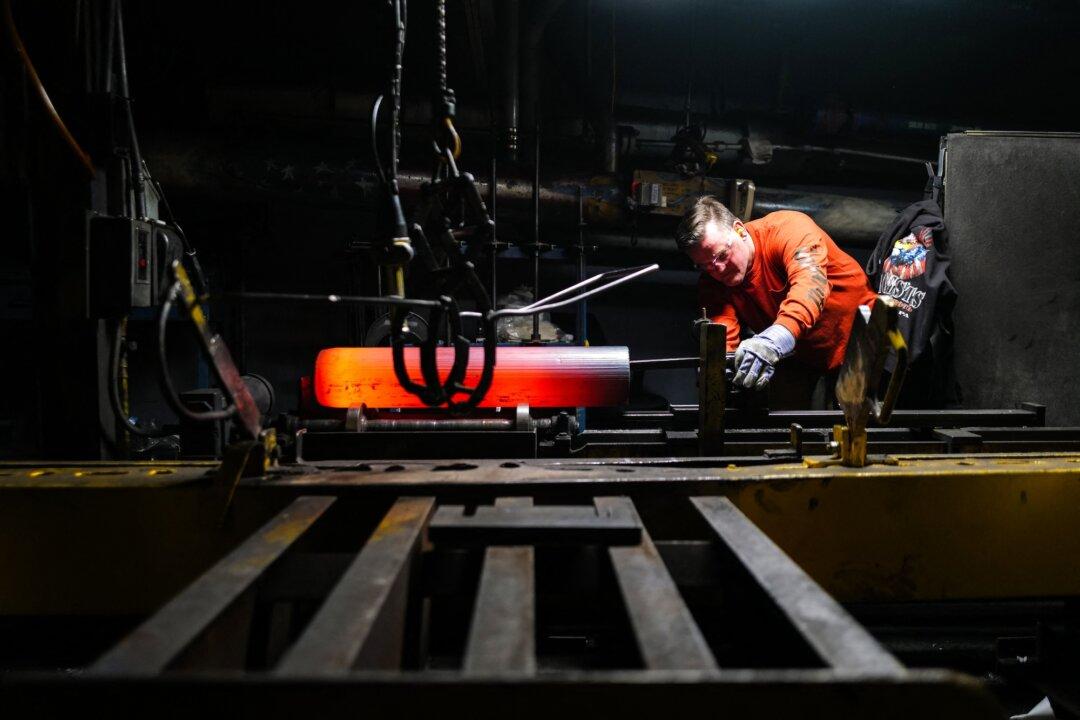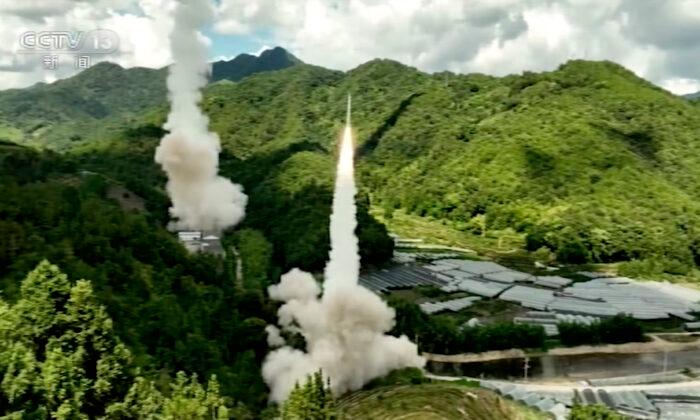This article is the third in a series of four reports on Airshow China, a biannual exhibition held in Zhuhai City, China.
Since 2012, China has included in the Zhuhai Airshow a growing display section dedicated to its new ground-force weapons, making Zhuhai both an aerospace and military exhibition. In addition, since the 2014 show, there has been a mobile demonstration of many of the new ground-force armor systems.
As with other Chinese weapons development and production sectors, there is great redundancy in the ground-force weapons sector. To the traditional major state-owned companies China North Industries Corporation (Norinco) and the China South Industries Corporation, more recent entrants include the Dong Feng Motor Company, aerospace companies such as the China Aerospace Science and Technology Corporation (CASC), China Shipbuilding Industry Corporation (CSIC), and a growing number of newer “private” companies.
Upgraded Armor for Mechanized Airborne Troops
At the 2014 Zhuhai show, China revealed a new lightweight air-droppable, mobile Norinco CS/SH-1 122 mm artillery system intended for its 15th Airborne Corps, and at the 2018 show, held Nov. 6 to 11, three new airborne vehicles were revealed.First, the People’s Liberation Army (PLA) is apparently going to upgrade its 2004, 30-mm, autocannon-armed, 8-ton Norinco ZBD-03 lightweight infantry fighting vehicle (IFV). The new variant looks like a smaller version of the Norinco ZBD-04 IFV and uses the Chinese co-produced Russian 100-mm gun and guided-missile launcher armed “Bakhcha” turret, already in use on the ZBD-04. This new airborne IFV is comparable to the heavily armed Russian BMD-4 airborne IFV.

In addition, for the first time, a new version of the older ZBD-03 hull was revealed, equipped with a 120 mm automatic mortar, giving PLA airborne units an additional mobile artillery system. Also revealed for the first time was a Dong Feng 4x4 truck with a modular container and 20 122 mm artillery rockets, perhaps the first such artillery rocket system for airborne troops. Though first seen on the Zhuhai flight line in 2014, in 2018, the CS/VN-4 4x4 30 mm cannon-armed scout vehicle appeared in airborne digital-blue camouflage, which could mean it also has entered PLA Airborne Corps service.

New Combat Laser Systems
China, like the United States, Russia, and other countries, is investing heavily in new laser weapons, especially electric-powered fiber-optic lasers, which hold great potential for increasing their power output while decreasing their size. At Zhuhai, CASIC presented China’s second 30-kilowatt (kW) laser for sale, called the LW-30—for laser weapon (LW), 30 kW.China’s first 30 kW laser, the Poly Technologies Silent Hunter, revealed at the February 2017 IDEX show, has a claimed ability to penetrate 5 mm of steel at 1 kilometer (0.6 miles). So, like the LW-30, it can be used to destroy incoming artillery shells or, if close enough, take down a helicopter. But, in contrast to the truck-mounted Silent Hunter, the LW-30 and its electric power system are carried by a large armored logistics vehicle.
In addition, CSIC displayed a truck-mounted laser system capable of taking down drones, meaning it is likely less powerful than 30 kW.
A Norinco CS/VP-3 4x4 armored vehicle was also displayed, equipped with a laser designed to destroy landmines.
Finally, the Huangchu Science and Technology Company displayed a low-power counter-drone laser mounted on a Dong Feng 4x4 jeep vehicle.

Mechanized Special Forces Vehicles
The PLA’s quest for greater mechanization has resulted in the creation of a unique family of transport and armed vehicles based on the small 4x4, 6x6, and 8x8 all-terrain vehicles (ATVs) produced mainly by China South Industries, but also marketed by Norinco. So far, it isn’t clear that the PLA operates the “Lynx” family of armed ATVs. But the PLA does operate the simple 8x8 “Bobcat” ATV transport for light troop and Special Forces troop, often seen being transported by Mi-17 helicopters.Although some of the Lynx family was featured at the 2014 and 2016 Zhuhai shows, additional armed ATVs were revealed at the latest show. The Lynx 6x6 CS/VP16B, seen for the first time, is equipped with a six-barrel 23 mm Gatling gun with four small surface-to-air missiles. Another revealed 6x6 Lynx variant is equipped with a 12-tube launcher for 107 mm artillery rockets. A third new variant 6x6 Lynx was equipped with a new version of the 82 mm autoloading mortar, while a fourth new variant carried a 120 mm autoloading mortar.
These new armed Lynx variants likely can’t fit inside a Mi-17 size helicopter but can be carried on external slings. Should they be acquired by the PLA, the armed Lynx ATV variants would be useful for mountain operations or for surprise airborne assaults such as opening operations for capturing ports and airfields.
New Armed Unmanned Ground Vehicles
Several Zhuhai shows have revealed new unmanned ground vehicles (UGVs), and the latest Zhuhai show saw the introduction of additional UGV. As with other unmanned vehicles, the PLA intends to excel in the development and usage of unmanned ground vehicles for combat, reconnaissance, and logistics and medical support.Norinco has long been a leading developer of UGVs; the latest Zhuhai show was used to reveal an auto-cannon armed version of its tracked King Leopard UGV, first seen in 2016. A new 6x6 wheeled Norinco reconnaissance UGV combines optical sensors on an extendable pole, with a platform for deploying a helicopter drone. As China makes general advances in artificial intelligence, it can be expected that the PLA will apply such advances to unmanned systems such as combat UGVs.
New 76-mm Mobile Anti-Aircraft Cannon
The Zhuhai show was also used to introduce an apparent joint venture between Norinco and CSIC: the JRVG-1 76-mm anti-aircraft cannon. The cannon is the H/PJ-26, a Chinese derivative of the Russian 76-mm AK176 naval cannon, used on PLA Navy warships. But while the AK176 has a 120-round-per-minute rate of fire, the JRVG-1’s cannon has a claimed 300 rounds per minute rate. The AK176 uses a timed airburst or “shotgun” ammunition round similar to the Oerlikon AHEAD round, and it’s also likely used by the JRVG-1 to increase its effectiveness at destroying incoming guided missiles.The JRVG-1 uses a 10x10 wheeled hull that is likely designed by Norinco, while the gun is aimed by a combination of radar and optical systems. At Zhuhai, the JRVG-1 was presented in PLA Marine digital camouflage colors, but it isn’t known to have been acquired by the PLA Marine Corps.

Final Comments
On Nov. 12, the People’s Liberation Army Daily published an editorial calling for the PLA Army to adopt a “proactive strategy” in which the PLA wouldn’t be “restrained” by other powers, and would make full use of new capabilities such as airborne forces and unmanned systems. While only an editorial, such articles often reflect a larger ambition for the PLA.At the 2018 Zhuhai show, it’s clear that the PLA is working hard on the elements of a future “proactive strategy.” Armor improvements for the PLA’s 15th Airborne Corps and new mechanized capabilities for light and Special Operations forces will give the PLA more options for being “proactive.”
Richard D. Fisher Jr. is a senior fellow with the International Assessment and Strategy Center and author of “China’s Military Modernization, Building for Regional and Global Reach.”





